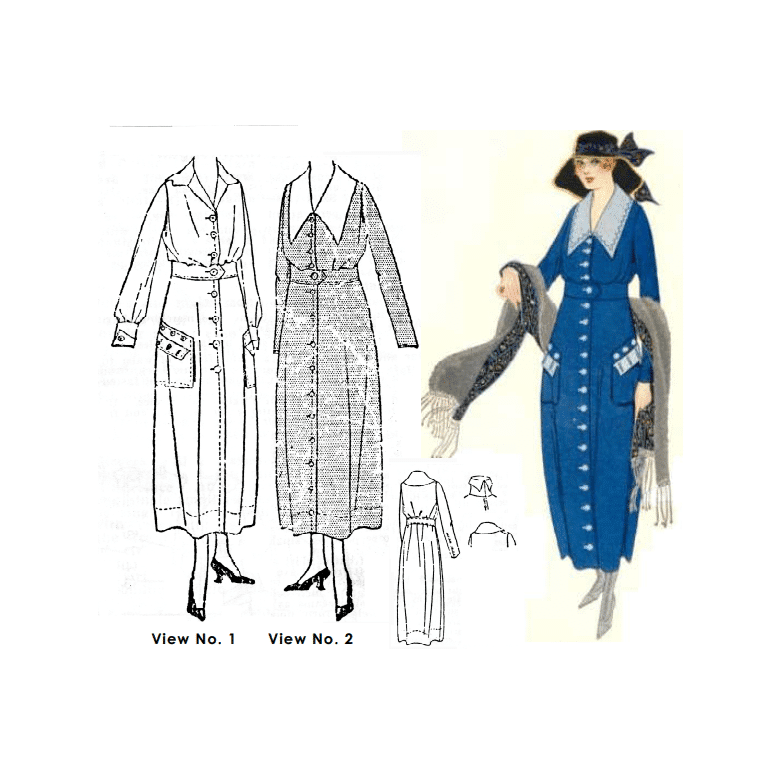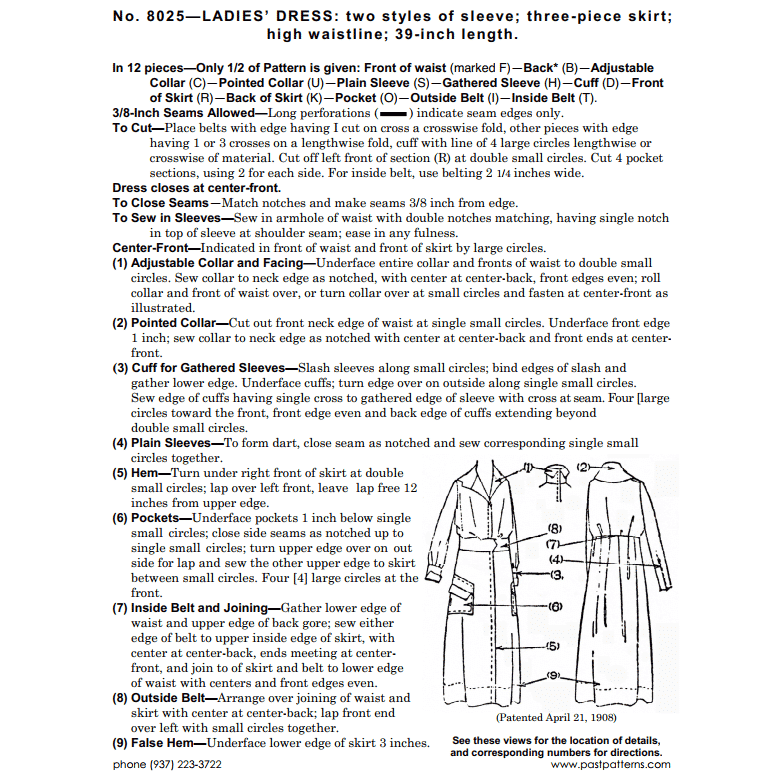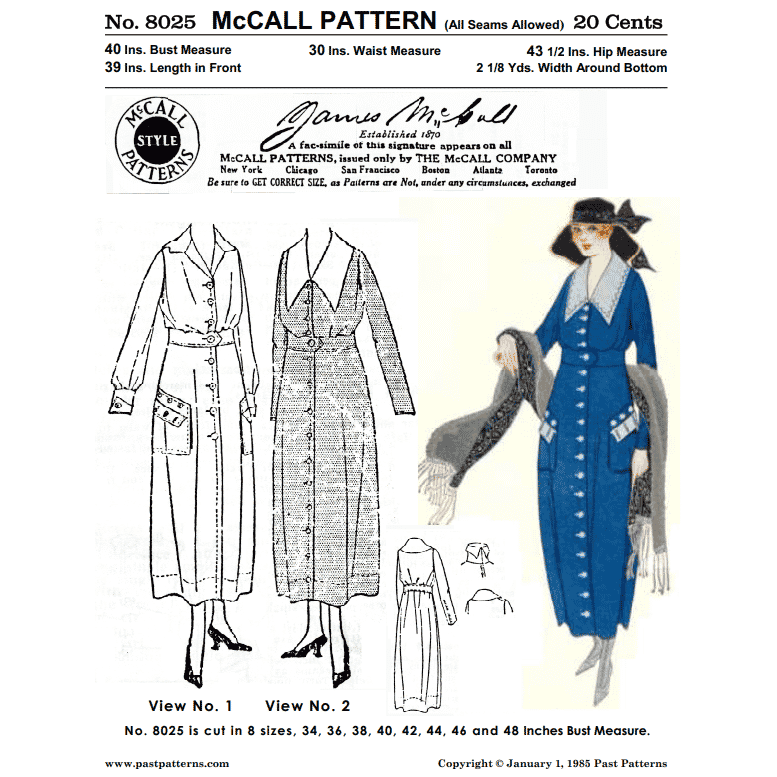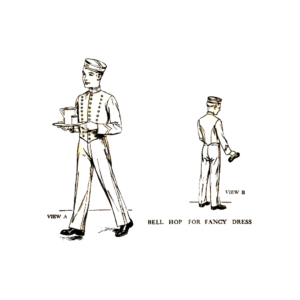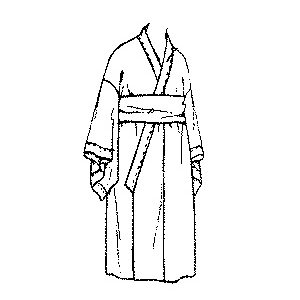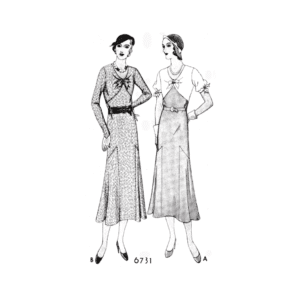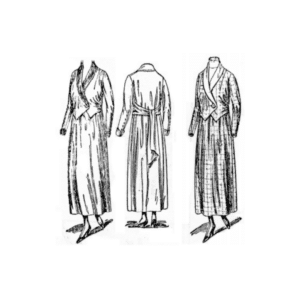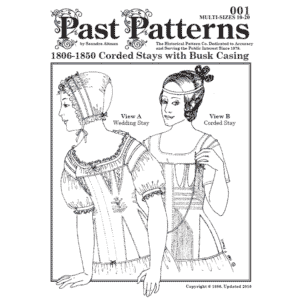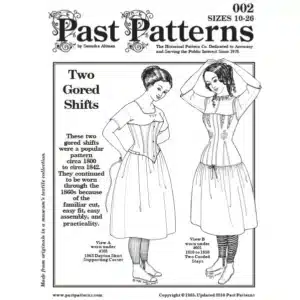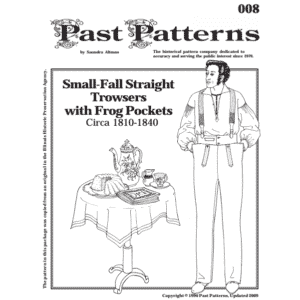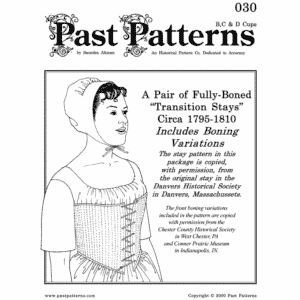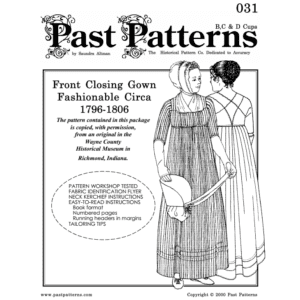Late 1910s Dress with Three-piece Skirt Sewing Pattern (bust 40 b40) – McCall 8025 Reproduction bust 40 b40 McCall Pattern Co reproduction
$24.00
Authentic Late 1910s Dress with Three-piece Skirt Sewing Pattern (McCall 8025) featuring high waistline and two sleeve variations. This WWI-era reproduction pattern fits 40″ bust with complete instructions. Available as physical pattern or digital download.
3/8″ Seams Allowed
Get Free Shipping
On all US Orders over $50!
Late 1910s Dress with Three-piece Skirt Sewing Pattern (bust 40 b40) – McCall 8025 Reproduction bust 40 b40 McCall Pattern Co reproduction
$24.00
Authentic Late 1910s Dress with Three-piece Skirt Sewing Pattern (McCall 8025) featuring high waistline and two sleeve variations. This WWI-era reproduction pattern fits 40″ bust with complete instructions. Available as physical pattern or digital download.
3/8″ Seams Allowed
Get Free Shipping
On all US Orders over $50!
All of our patterns tell a story.
Why Choose This Pattern?
Late 1910s Dress with Three-piece Skirt Pattern History
This authentic Late 1910s Dress with Three-piece Skirt Sewing Pattern (No. 8025) reproduces a classic design originally published by The McCall Pattern Company. This Late 1910s Dress style was advertised in McCall's magazine in November 1917, representing the transitional fashion of the World War I era.
The Late 1910s Dress Silhouette and Design
The Late 1910s Dress with Three-piece Skirt Sewing Pattern captures the essence of wartime fashion when practicality became paramount while maintaining feminine elegance. This Late 1910s Dress features the characteristic high waistline and 39-inch length typical of the period, offering modern sewists an opportunity to recreate authentic 1917 style.
Originally described on the packaging as "Ladies' dress; two styles of sleeve; three-piece skirt; high waistline," this Late 1910s Dress pattern allows you to create two distinct variations:
- View No. 1: A classic Late 1910s Dress featuring an adjustable collar and facing, gathered sleeves with decorative cuffs, practical pockets, and an outside belt that creates the definitive silhouette of the era.
- View No. 2: An alternative Late 1910s Dress showcasing a pointed collar, plain sleeves, and inside belt for a more streamlined look with contrasting collar option.
Late 1910s Dress Sizing and Proportions
This reproduction Late 1910s Dress with Three-piece Skirt Sewing Pattern is designed for authentic 1910s proportions:
- Bust: 40 inches
- Waist: 30 inches
- Hip: 43½ inches
- Front length: 39 inches
- Bottom width: 2⅛ yards
While the original pattern was cut in 8 sizes (34-48 inches bust), this reproduction offers size 40 only. For assistance with resizing this Late 1910s Dress pattern, please visit our Resizing Vintage Patterns guide.
Learn more about historical pattern adaptation at Vintage Sewing Pattern Resources.
Materials for Your Late 1910s Dress Project
Creating an authentic Late 1910s Dress with Three-piece Skirt requires:
For size 40 bust:
- View No. 1 (one material with collar and pockets, gathered sleeves): 4¾ yards of 36-inch fabric
- View No. 2 (with contrasting collar, plain sleeves): 4¼ yards of 36-inch fabric plus ⅜ yard for collar
- Belting: 1 yard
- All seams: ⅜ inch
Historically Accurate Fabrics for Late 1910s Dresses
For an authentic Late 1910s Dress, consider period-appropriate materials:
- Winter: Wool blends, heavier cottons, and serviceable fabrics reflecting wartime efficiency
- Summer: Lighter cotton, linen, or lightweight wool for year-round versatility
- Colors: Muted tones predominated including navy, brown, olive green, and burgundy
- Embellishments: Simple details like buttons, modest lace trims, or decorative stitching enhanced these Late 1910s Dresses without compromising their practical nature
For more historical context about 1910s fashion, visit the Metropolitan Museum of Art's Costume Institute.
Pattern Format Options
Our Late 1910s Dress with Three-piece Skirt Sewing Pattern is available in two convenient formats:
- Physical Pattern: Traditional paper pattern mailed to your address
- Digital Download: Instant access PDF version available at our Digital Pattern Shop
The digital download version allows you to print at home or at a copy shop, giving you immediate access to start your Late 1910s Dress project right away.
For historical sewing techniques applicable to this pattern, check this Historical Sewing Guide.
What's Included in Your Late 1910s Dress Pattern Package
Our comprehensive Late 1910s Dress with Three-piece Skirt Sewing Pattern includes:
- Complete set of 12 pattern pieces with ⅜-inch seams allowed
- Front cover featuring original McCall artwork showing the Late 1910s Dress as worn
- Back cover with detailed notes about constructing the Three-piece Skirt and dress body
- Cutting instructions and finished garment illustrations displaying both variations
- Materials requirement charts and fabric cutting diagram for View No. 1
- Historical information on 1910s-1920s waistline finishes particularly relevant to this Late 1910s Dress style
- Detailed construction instructions for assembling your Three-piece Skirt and bodice
Note: Cutting diagram for View No. 2 of the Late 1910s Dress is not provided.
Our physical patterns are hand-drawn to emulate the originals and printed on 20 lb. white paper in 36-inch wide sheets, carefully packaged in a reusable plastic sleeve to protect your Late 1910s Dress with Three-piece Skirt Sewing Pattern.
Learn more about the historical significance of WWI-era fashion at the Fashion History Timeline.
We always offer reasonable shipping rates for domestic and international orders, with automatic adjustments for multiple item purchases.
Experience the elegance and practicality of WWI-era fashion with this authentic Late 1910s Dress with Three-piece Skirt Sewing Pattern reproduction.
Additional information
| Weight | 9 oz |
|---|---|
| Dimensions | 13 × 10 × 2 in |
Sizing Information
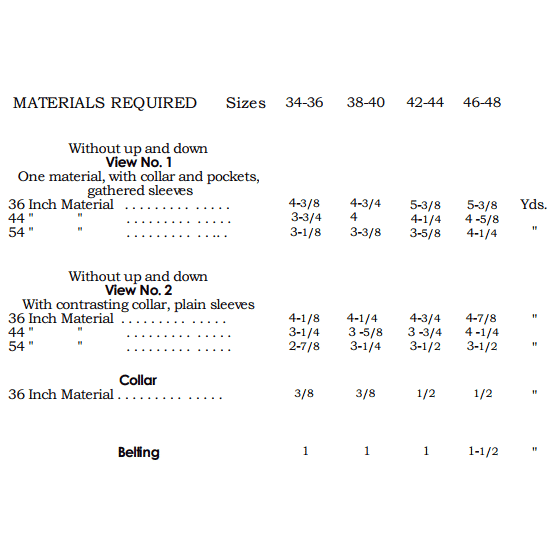
(Metric size sheet opens as a PDF in a new browser tab)
Preferred Vendors
Past Patterns works with vendors from all over the world to help us replicate the amazing articles of clothing. Now you can too!
Visit our preferred vendors page to order directly from some of our top recommended suppliers.
FAQ's
(Frequently asked questions)
Why are both Trowsers and Trousers listed on site?
Over the last 200 years, much like the human body, our style of language has changed. For vintage patterns, we attempt to use the language of the day where possible.
Can you grade (edit) a Vintage Revival pattern for my size?
please contact us with the specific pattern number and the specifications you require. We have staff available for this for an additional fee.
What sizes do Past Patterns patterns come in?
Our patterns, with some exceptions, are manufactured in sizes 8 through 26 for women and sizes 34 through 54 for men. Most patterns are multi-sized. For a complete listing of measurements in inches see the size chart.
Do you have vintage patterns (manufactured prior to 1950) that you want to sell?
we are always on the lookout for original, American designed, vintage patterns especially for categories outside of current items. We are interested if you have 1 pattern or 1000 patterns. Give us a call to discuss.
Why is my pattern size different from my off the rack dress size?
We use the U. S. Board of Standard Measurements to size our patterns. The ready made clothing manufacturers have their own set of sizes developed from their own statistics. For a complete listing of measurements in inches see the size chart.
How are the patterns packaged?
We package our patterns in two forms: Bond Paper and Tissue. Except for the Tissue patterns, each is slipped into a reusable plastic sleeve. Many contain documentation in the form of Historical Notes or the printer ie., Butterick. Because the patterns are printed in house to order, they can take from three to seven days. Tissue patterns, which are printed out of house, are available to ship immediately.
What does a Corset Kit contain in addition to the Corset pattern?
In addition to the pattern, the kits contain everything you need to make the corset except the thread. The kits contain, according to their type, fabric and lining, stays, clasp or busk board, back lacing, tape for finishing the edges, trim lace, ribbon, leather, tin stock, waist tape, punch and setter, eyelets, marking pencils, cording, reed and a loop turner.
Need a pattern in your language?
we can translate our instructions into just about any language
Have an old and incomplete Past Patterns item. What can I do?
The answer depends on if the pattern is still in production or not. If it is, please mail us the old pattern and we will ship you a copy of the latest pattern for a minimal fee along with normal shipping charges. If the item is no longer in production, we would need to know exactly what you have to determine the best course of action to help you.
What is the difference between a Past Patterns original pattern and a Vintage Revival pattern?
The Past Patterns originals were designed in house and based upon the research, disassembly and time of Saundra Ros Altman. These designs come from finds all over the United States reaching from San Diego, California to the Smithsonian Museum in Washington, DC. She created the initial patterns, the sizing charts and the instruction content. Many of the these patterns are multi-sized or are available in various sizes. For the most part, these designs are done taking into account the modern human body's shape, height and weight. The Vintage Revival patterns are traces or copies of an old, mass produced pattern; the first mass produced patterns came out in the 1850s. For the most part, you get exactly what came in the original package; in some cases, Saundra has appended historical notes to the instructions. The Vintage Revivals patterns, being copies of the originals, generally only come in one size and are based upon the size and shape of the human body from the era the pattern came from.
What software do you use to create patterns?
We utilize PW Studio for our designs. Isabelle Lott, a contributor over the years to Past Patterns, is the owner of the company and will be happy to answer an software related questions you have. Her software is available for licensing.
What measurements do I need to know to order a Corset Kit?
The bust and back length. The back length is measured from the prominent bone at the base of the neck to the natural waistline.
Where can I see the appropriate clothing fabrics for the 18th and 19th centuries?
You can see 1740 through 1940 fabrics in a book titled "Textile Designs" by Susan Meller and Joost Elffers. The subtitle states, "Two Hundred Years of European and American Patterns for Printed Fabric by Motif, Style, Color, Layout and Period and 1,823 Illustration in Color." What they don't say is that 90% of the swatches pictured are life size. The ISBN is 0-8109-3853-7. A second book is Wearable Prints, 1740-1860, History, Materials, and Mechanics by Susan W. Greene. The ISBN is 978-1-60635-124-6. Great books! Order it from your local library that has interlibrary loan capability if you cannot afford the price. There are now many sources for appropriate fabric through the Internet.
Where can I find antique patterns to purchase?
On the Internet try: "Patterns from the Past."
Need a pattern tomorrow?
we do offer expedited domestic shipping for extra fees. We can also expeditie international shipments but delivery dates overseas cannot be promised.
Becoming a Wholesalers of our patterns
We offer Wholesalers significant discounts that will allow both your and our businesses to flourish.
Why don't we sell PDFs of our patterns - First due to piracy. We have spent over 40 years creating and tracing these patterns along with researching them. We print and ship all of our patterns ourselves. If we started sending out PDFs, in no time, copies of our Intellectual Property would be all over the internet and we would be out of business. Second, some of our patterns are constantly being updated. We want our clients to get the BEST POSSIBLE version of our products.

